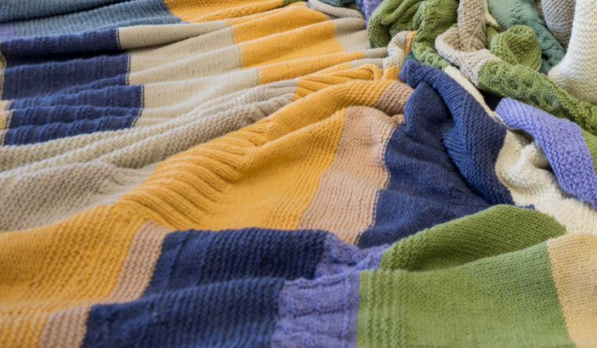
The Entangled Map

Created by more than 2,000 knitters from 22 different countries, who were mostly working-class women, The Knitting Map became the subject of national controversy in Ireland. Exploring the creation of this multi-modal artwork as a key moment in Irish art history, the book Textiles, Community and Controversy locates the work within a context of feminist art practice. Edited by Jools Gilson and Nicola Moffat.

For some years after it was made as part of Cork's year as European City of Culture (2005), The Knitting Map was safely stored away, its different sections enshrouded in polythene and placed in sealed caskets. It was first exhibited in Cork's Millennium Hall (itself a part of the City Hall) in 2006, before travelling to the United States the following year. The Knitting Map's next appearance in Cork was in 2015 in The Glucksman at University College Cork, where its installation was documented in a series of evocative images by university photographer Tomas Tyner. The work almost appears to have its own agency, a vast torrent of knitted fabric cascading down one wall and pooling its way across the floor.

Blurring the boundaries between the internal and exterior spaces of the gallery, the ripples and folds of the Map's materials flow right up to the windows, beyond which can be glimpsed a canopy of trees, their branches pressed insistently against the glass. As a viewer encountering The Knitting Map for the first time through these photographs, it was the sensuous embodiment of landscape that I found the most unexpected, combined with a suggestion of the material qualities of the wool itself: its smell, or its softness, or its wiriness.
Extract from The Entangled Map and Irish Art by Fionna Barber, published in Textiles, Community and Controversy (Eds. Jools Gilson & Nicola Moffat), Bloomsbury.
Selvedge readers can get 35% off Textiles, Community and Controversy by entering the code ‘Selvedge19’ at checkout. Purchase here.
